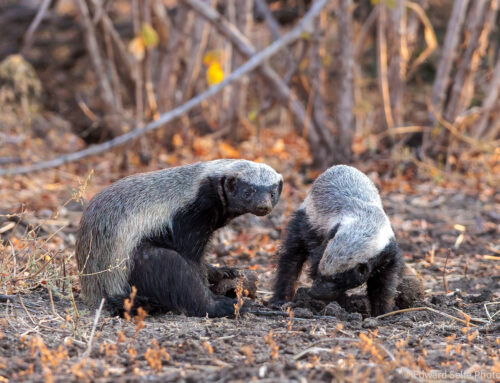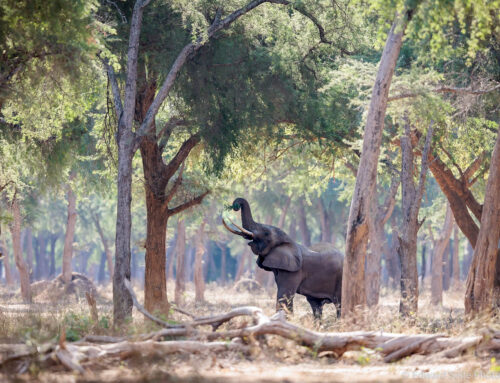I occasionally lead private safaris for individual photographers in South Luangwa. This gives them time to practice their skills and enjoy one-to-one photographic tuition. Peter came to me via Africa Geographic Travel who run a wide range of specialist safaris throughout the region. But AGT seem to have a soft spot for South Luangwa, with its stunning scenery and excellent game, as they keep sending great bookings to me!
I had a fantastic week with Peter, beginning with a visit to a stunning Carmine bee-eater colony, taking in two elephant river crossings, one of my best ever male leopard sightings and a lion kill of a large buffalo on the final morning. I hope you enjoy reading about our trip!
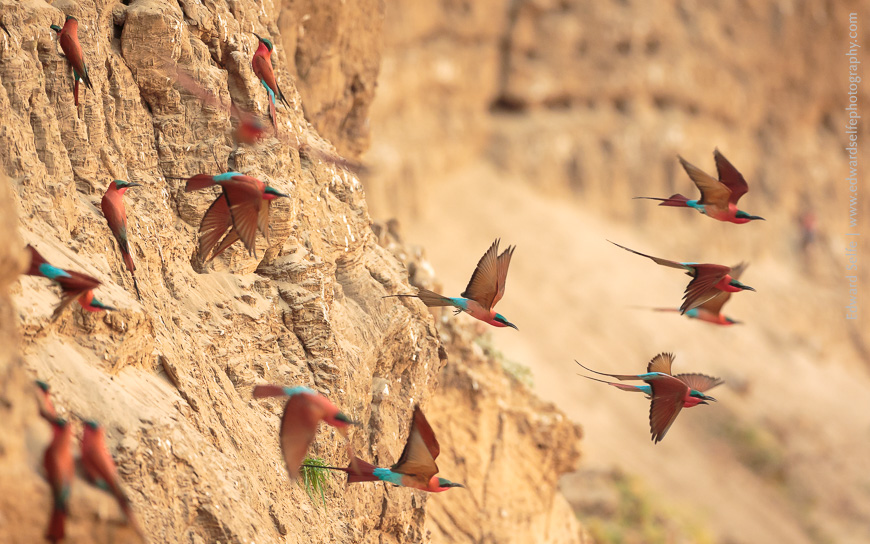
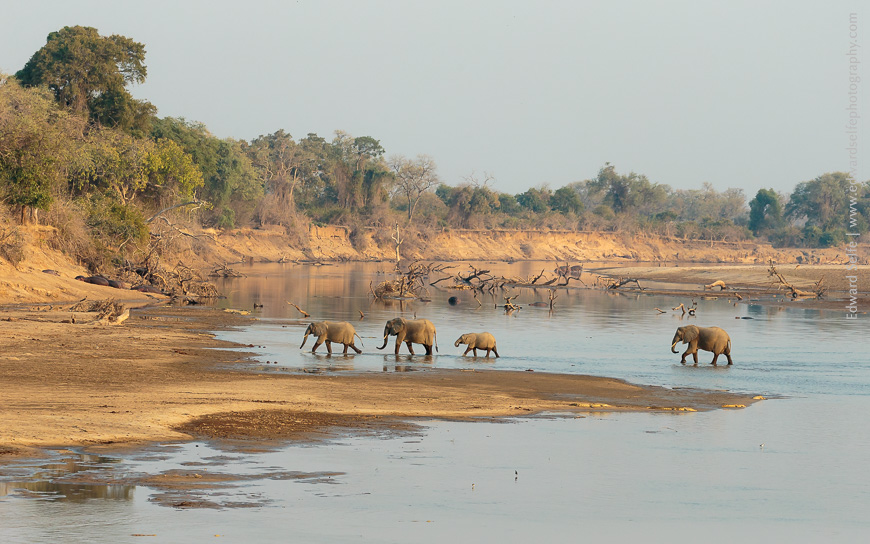
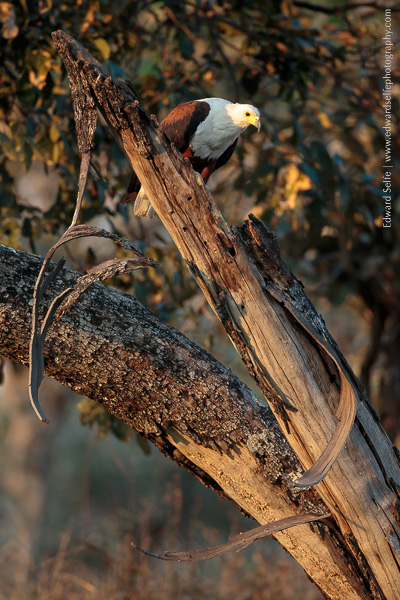
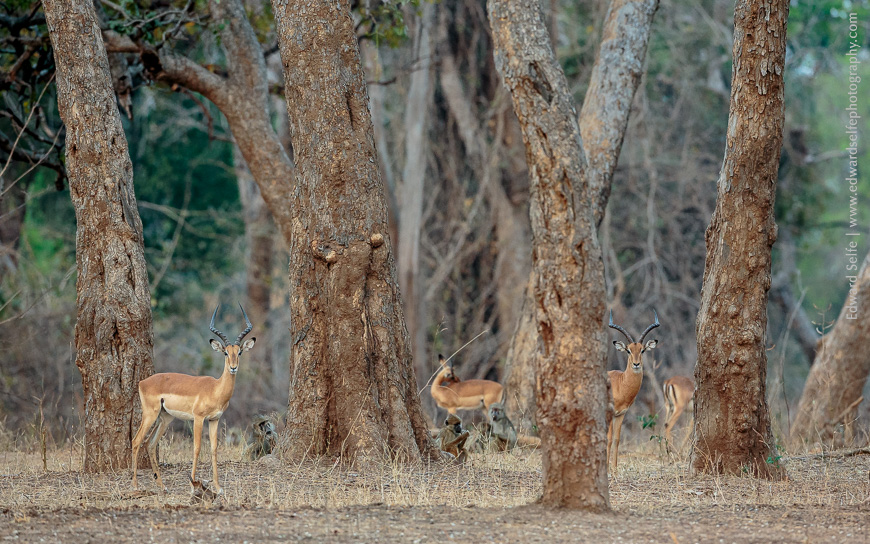
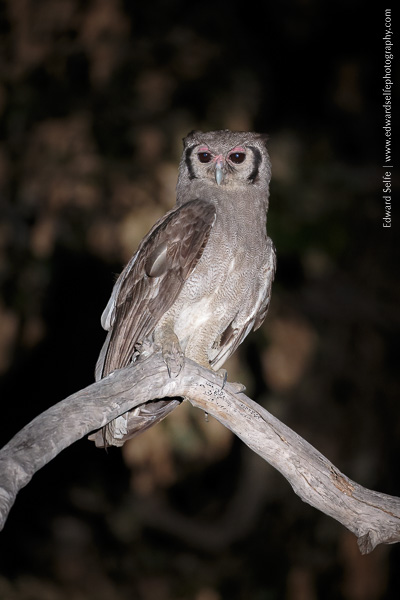
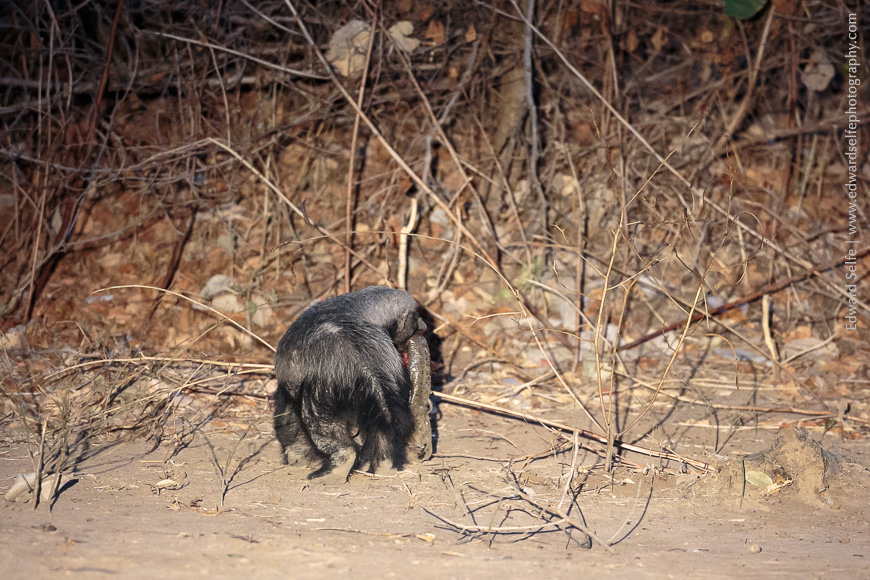
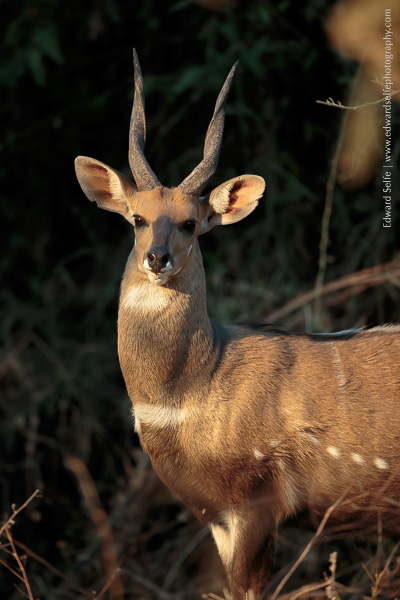
After a couple of excellent mornings with good game in a mix of interesting situations, we decided to explore the central area of the Nsefu Sector, where there’s a beautiful hot-spring which draws game from all around. Any trip there is beautiful, and occasionally it provides some extra surprises.
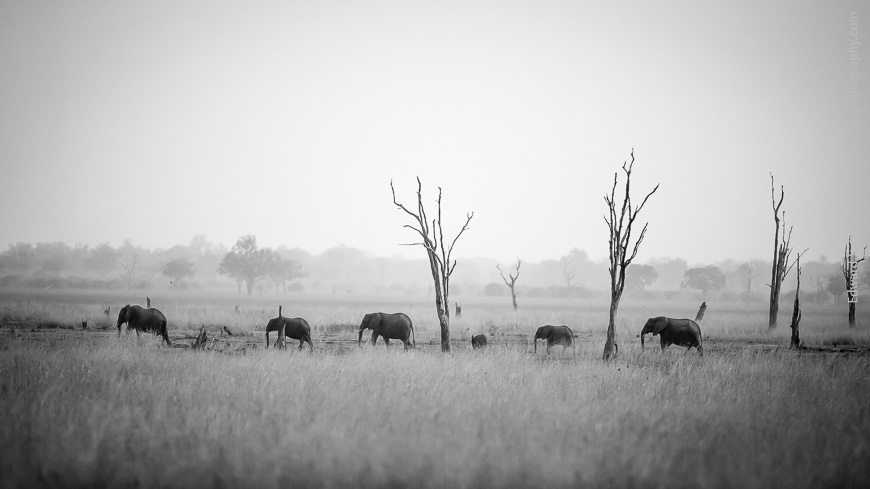
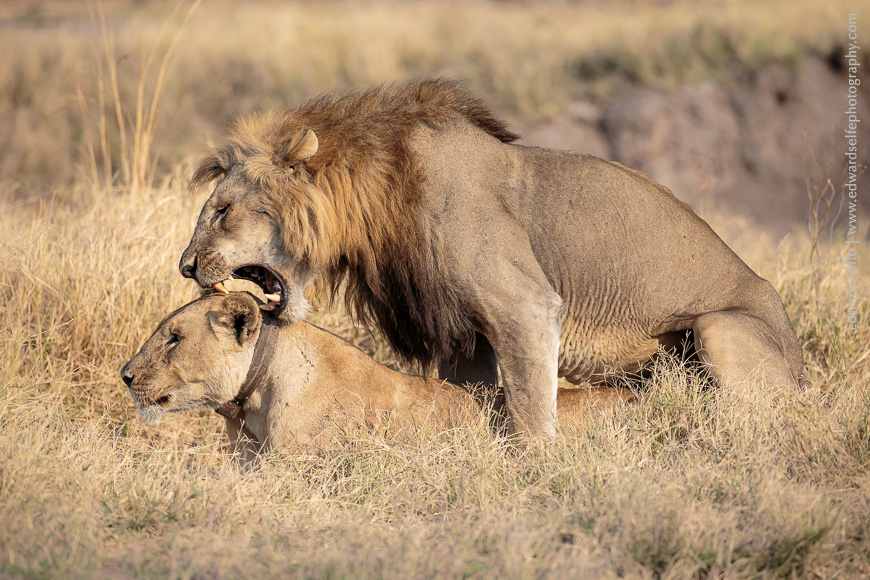
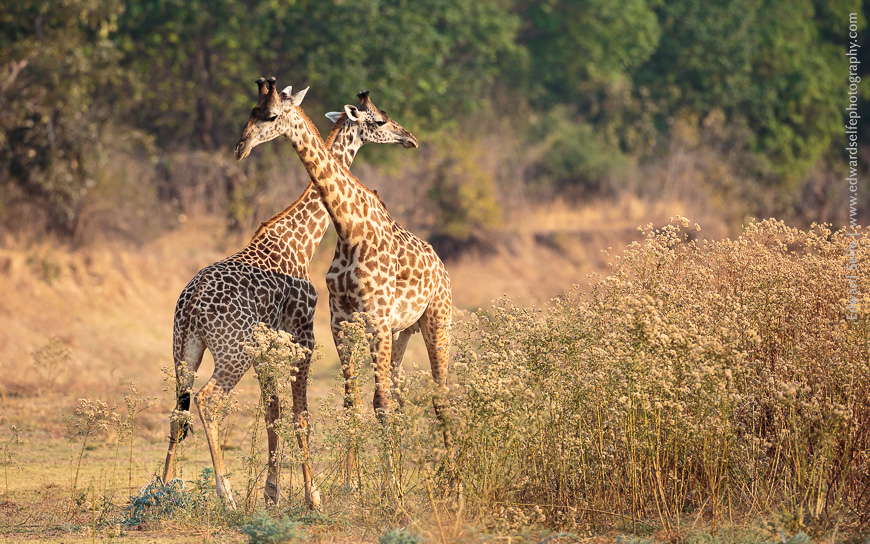
Early the following morning, we enjoyed one of the best periods of the week. Soon after leaving camp, we found a pair of leopards finishing off an impala carcass that they’d killed the day before. They were quite shy so they moved off quickly, giving us a good sighting but not much chance for photos.
We heard hyaenas giggling nearby and decided to follow…which lead us to a coalition of 3 male lions who were feeding on a hippo! Whether they killed it is up for discussion, but it was quite smelly already so we suspect it died of natural causes some days previously. There were a lot of hyaenas nearby, but they dared not approach closely while the large males were there. We sat and watched knowing that, at some stage, the bloated lions would move off and the scavengers would get their chance. The video below shows some of the action; initially, the lions were feeding, taking turns to protect the carcass. Two moved off, and the third then followed, giving the hyaenas a chance to move in. But not for long!
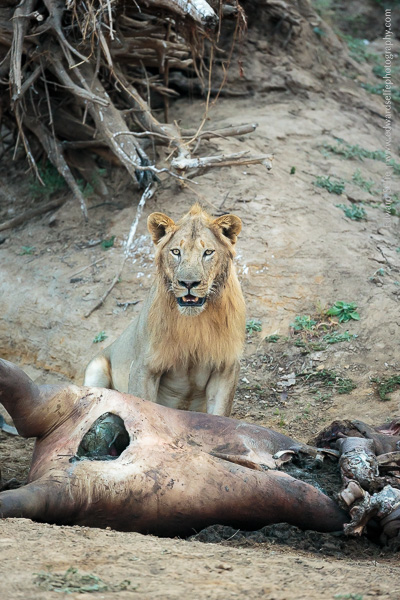
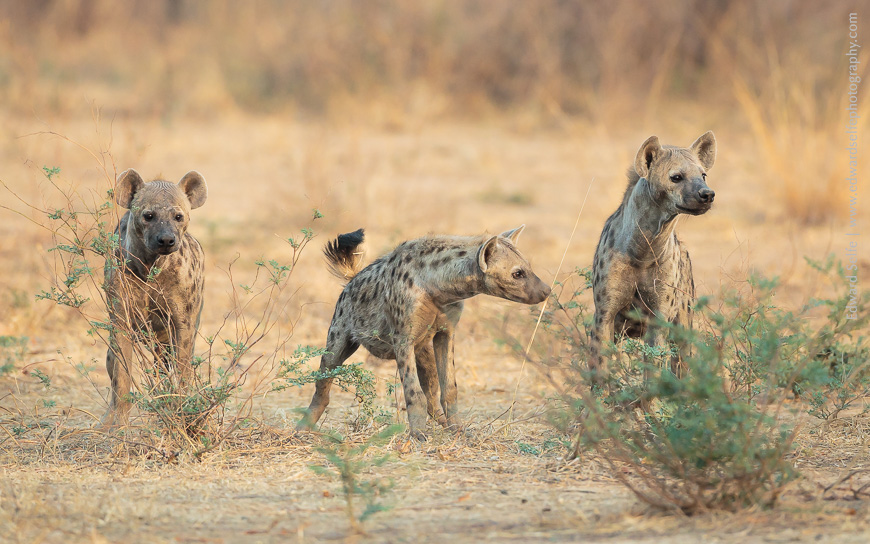
Wondering how the morning could possibly develop further from that, we decided to follow some baboon calls that we’d been largely ignoring! The baboons were shouting “wa-hoo”, their leopard alarm call, but I contained my expectations since the calls had been going on for some time and the leopard had likely moved on. Fortunately, we found him and he was just getting to a large open area.

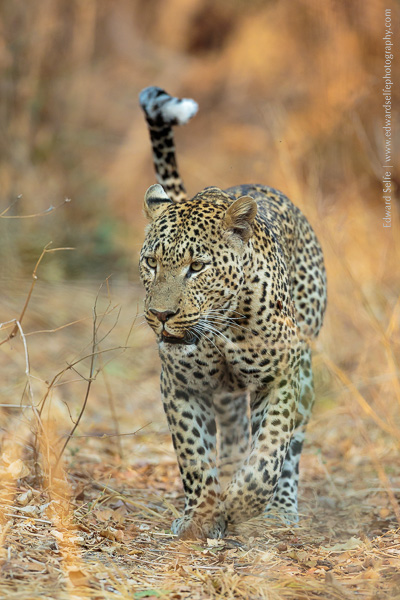
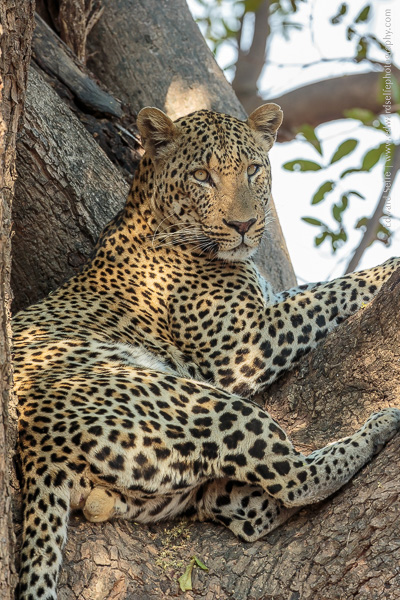
After the drama of the morning, we decided to stay close to the lion sighting in the afternoon, in case the three large males came to drink at the river. On leaving camp, we found that they’d already moved the water’s edge and were sitting on the wet sand, being observed by 30 giraffes on the other side! Their position cast the smell of lion all across the elephants’ normal crossing point, so the elephants moved upstream to a spot where we could get down to their level and watch as they splashed through the water towards us.
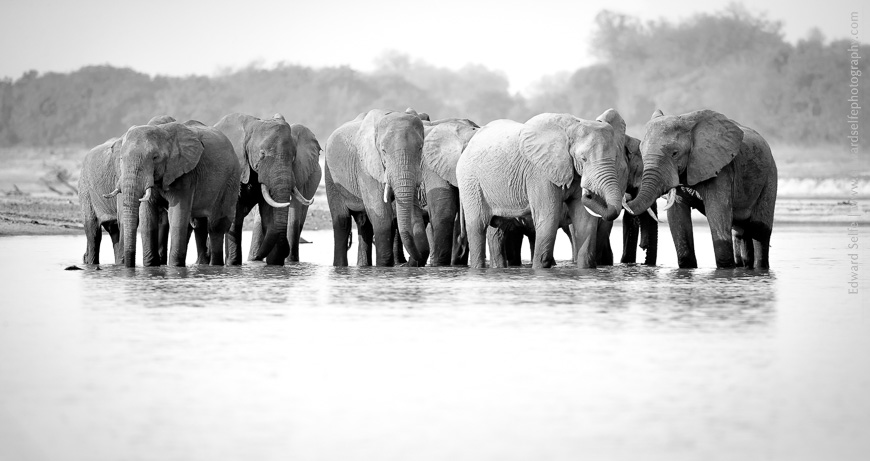
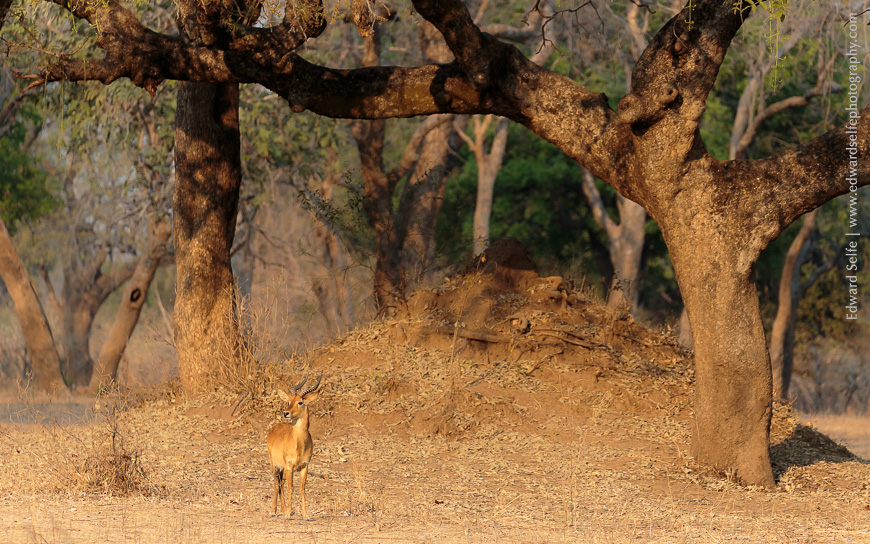
Returning to where the lions were waiting on the river-bank we found a large herd of buffalo heading to drink at the same spot as the lions! Hoping that a hunt might take place, we hung back, unable to get to a position where we could see without spooking the herd. Primarily our presence in the bush must be non-invasive and we have to take care not to influence the outcome of survival situation, in either direction. But the buffalo got wind of something and turned back, heading instead to another lagoon nearby.
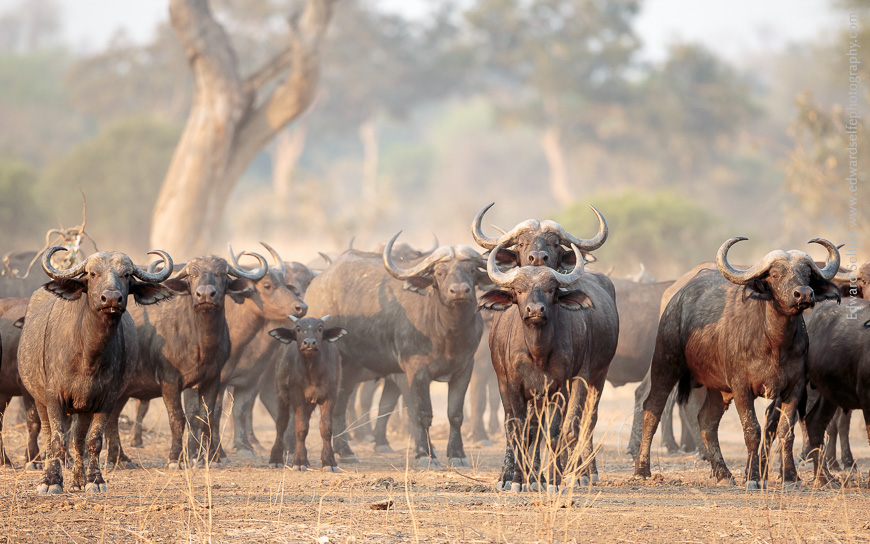
However, we knew that the lions would be hungry, after 36 hours without a meal. So we planned to follow the lions and the herd the next morning. At 04.15, I awoke to the sound of male lions calling loudly. Being sub-adults, these lions had not been calling much, so I suspected that their call was one of victory, having just made a kill. Indeed, on leaving camp in the morning, we came across the 3 of them starting to break into the large bulk of a female buffalo that they had killed just 500m from the camp!
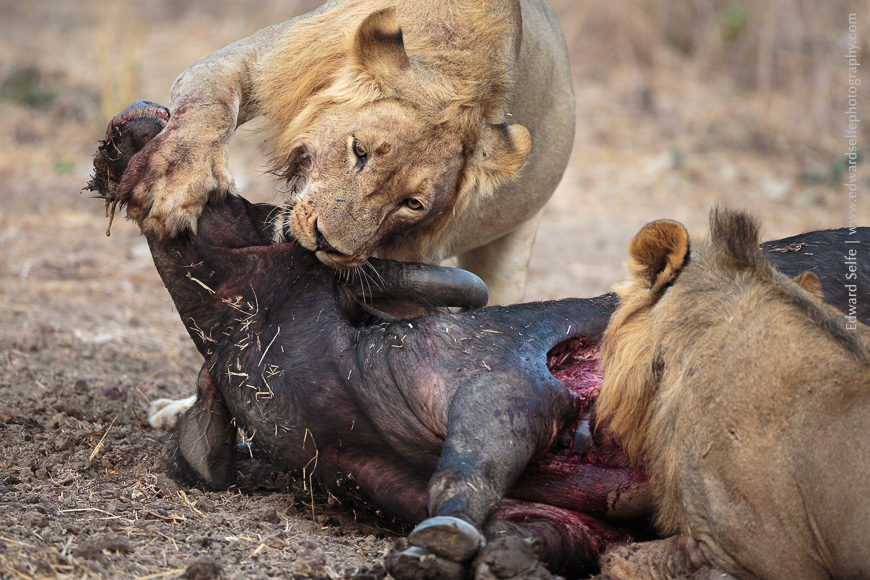
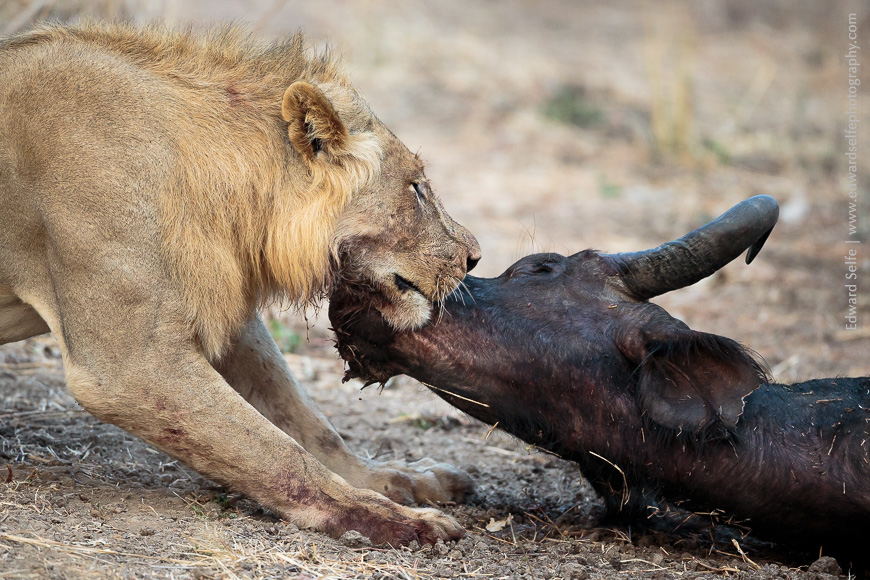
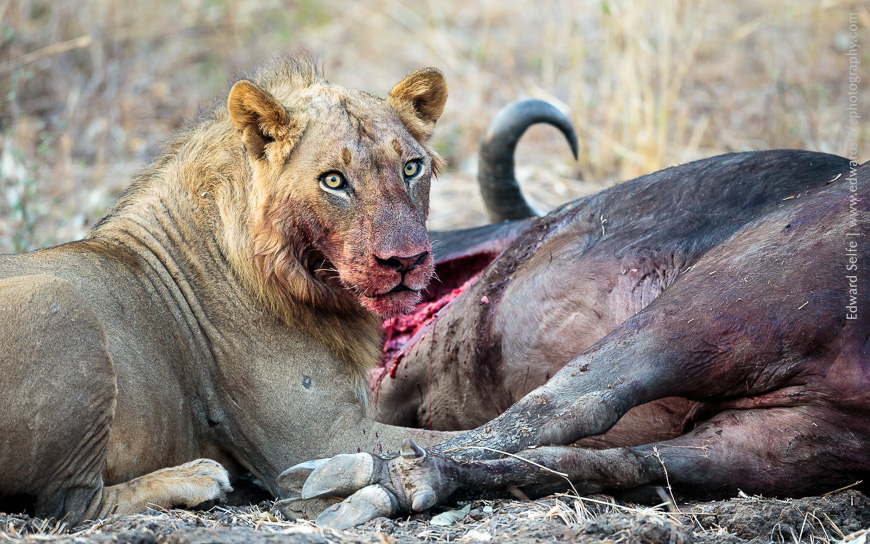
With hundreds of photos taken of the feeding frenzy that morning, we headed back to camp to prepare to leave for the airport. It was a fantastic final morning….and a reminder that however well the week is going, you can’t be sure what is coming tomorrow!
Peter and I had a great week in Nsefu Sector, and I thoroughly enjoyed his company. I hope you have enjoyed sharing our trip through reading this report. Thanks for taking the time to follow my blog. If you would like to share a safari with me in the Luangwa, you can contact me or Africa Geographic Travel


